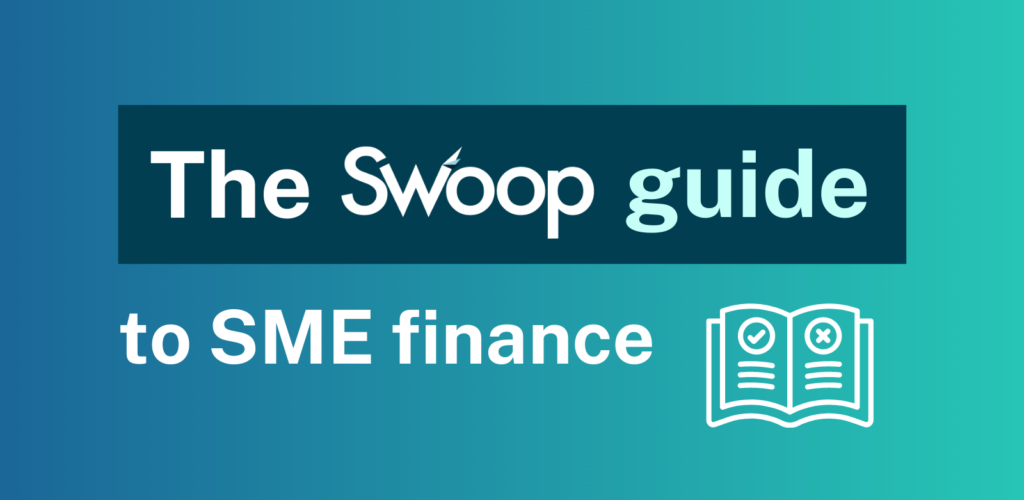If your business needs funding and you don’t know where to start – or have hit a brick wall – Swoop will point you in the right direction.
Your great business idea needs some startup capital to get off the ground. Or you’ve got off the ground and you need a new piece of equipment. Or you have everything you need to get up and running, but some money in the bank to make sure you can cover all your bills before customers start paying their invoices would give you peace of mind.
There are as many reasons for needing funding as there are businesses but at some point, every business is going to hit a funding roadblock when they need some capital and it’s not immediately available.
Swoop gives SMEs access to funding across grants, borrowing and equity. Read on to find out how you can make sure your business can position itself to get the best outcome and acquire the funding it needs to grow.
Step one: cost your need
How much money does your business actually need? If you have a specific project or purchase in mind, you need to know exactly what it costs to ensure that you ask for enough capital to cover it.
If you are selling equity in your business, getting the numbers right early is even more important: you are asking for an investment into your business that will see your profits increase. You need to know what your whole business is worth, how much of it you are willing to sell and what you should ask for in return. If the money requested doesn’t deliver what you need to boost our business, it will become a burden rather than an opportunity.
If you have a number of projects or purchases in mind, you may need to decide on which will deliver the most value the fastest and prioritise those.
Key points:
- Don’t undersell your business
- Don’t over-fund one part of the business (eg production) and leave another part struggling (eg. delivery)
- Prioritise: work out what is essential, what’s nice to have and what is irrelevant
- If you are considering buying a property, work out how much you will need to raise as a deposit
Step two: remember to include additional costs
Once you have costed the “known knowns”, you should build in a margin of error for costs you may not have accounted for. For example, if you are buying a new piece of equipment, you may not have included maintenance costs, or the cost of an employee to operate it.
Some of these costs will need to be covered by you, or you will have to revise the amount of funding you apply for, or you may have to change how you fund your purchase. For example, if you are purchasing specialist equipment, asset finance may include training that goes with it. If you fund the purchase by other means, you will also have to pay for the training.
You should also think carefully about any long term project and remember that things don’t always go to plan: if you are employing a large number of people, running behind schedule can rack up considerable unforeseen costs.
Key points:
- If you are looking at specific equipment, will there be further installation, maintenance or training costs?
- If you make more products, have you got the mechanism in place to market it to your customers? Will you need to hire more staff / buy more ad space?
- Check that there are no other areas you have forgotten: walk through any new process that you are seeking funding to provide
- Buying property? Remember to factor in surveyor costs, legal fees, repairs etc.
Step three: work out what you can afford
What you are able to borrow will depend on how much the lender decides you can pay back.
Before you enter into a loan agreement, you should ask yourself what happens if your sales decline or you encounter other unexpected calls on your cash? A lender may not always wish to see a contingency plan, but for your peace of mind it helps to have one in any case.
A big element in determining affordability is the behaviour of your cashflow. What are the big bills you have to pay (e.g. energy, payroll, corporation / value added tax?) What do you have in place to cover these? Before beginning the application process, it can be useful to ensure that you are not paying more than you have to for things like foreign exchange or banking services.
Swoop can help you compare and switch products like these, saving you thousands that you can lough back into your business.
Swoop uses open banking technology which securely shares data with lenders. This means that they are able to get a more accurate idea of the cashflow in your business and offer finance deals that are tailored to your needs.
Using tech tools often opens the door to more options for borrowers and radically reduced the amount of time it takes to put in an application: most of the information required by lenders is available through open banking and using the Swoop platform means that applications are automatically completed for you.
Learn more about open banking here and in the video down below.
If you are thinking about selling a share in your business, you need to figure out what your business is worth, how much equity you are prepared to part with and what you would like to charge for it. Investors will want to see a clear plan for how their money will be used so make sure you can explain your plan in detail.
If you are setting your sights on a specific piece of equipment, asset finance may be the most appropriate means of financing; this includes cars as these are often financed by the company you are purchasing the car from. A better deal may be available elsewhere.
Key points:
- Whether you can afford repayments is the number one question for lenders
- What are your contingency plans?
- Open banking can give solid data about affordability based on an analysis of your bank account. Swoop has access to this information and it’s likely that your accountant does too, so leverage this expertise
Step four: do your research
Many businesses go to their bank as their first step when they are seeking funding. This is not necessarily a bad idea, but the bank is unlikely to offer the best deal out of all that is available on the market. They may also say no to providing funding for reasons other than a business’s ability to pay back – they may have simply reached their lending limit.
Swoop can help you here: we have options from the whole market and a team of funding experts who will be able to suggest and explain which funding options could suit your needs.
One of the best-known products is the startup loan, which comes at an attractive rate of interest and often includes mentoring as part of the package. Please note, criteria apply: these loans are only available to businesses that have been trading for less than three years.
Beyond startup loans, there is a bewildering array of lending options on the market. A standard unsecured loan may not be right for you and you could benefit from one of the innovative new products that have come onto the market in recent years.
For example, if you are an online shop with seasonal trade, an MCA may suit you. If you are having cashflow issues, a VAT loan may be a good solution. Alternatively, if you require funding for a specific vehicle or piece of equipment, asset finance may be more appropriate.
Grants are another useful source of potential funding, though again your research will need to be carried out carefully: some projects are easier to fund than others and money may be available in certain regions. You can use the Swoop grant finder tool to check the latest available grants.
If you are applying for a grant, remember that it is often a requirement for businesses to match any funding received: for example, if you win a grant for £100,000, your business will have to find a further £100,000 through existing funds, borrowing or selling equity.
Finally, a word on equity: quality is more important than quantity. If you are pitching your business, you need to be a good fit for the investor or they just won’t be interested, regardless of the quality of the opportunity you are offering.
Swoop’s Equity Team has great relationships with investors of all kinds. They will also be able to help you put together the essential pitch deck that is your first step to selling equity. Learn more here.
Key points:
- BEWARE: making multiple applications for loans and being turned down will harm your credit score, making it more difficult and expensive to get an agreement. Use a credit score checker that does NOT affect your score and use it to get an idea about how others see the financial state of your business: it may pay you to fix a bad credit score before you pursue finance.
- Grants can take a long time to apply for and there is no guarantee that you will be successful. It can boost your chances to apply with the help of a specialist grant bid writer – check the Swoop grant page for more information.
- Selling equity? VCs can be sector specific: you will save a lot of time by targeting the right people.
Step five: get a good deal
There have been books written about getting the best deal possible. Whether or not you’ve read them, Swoop can help you achieve the best for your business by giving you quick and easy access to all your options and let you compare costs side by side.
By using Swoop, you will be able to see deals which are guaranteed to accept you based on the information you have provided – this will protect your credit score, which means that funding will get easier over time.
Swoop has specialist teams to help with things like asset finance, commercial mortgages, equity finding and more: having Swoop on your side can remove roadblocks and smooth the way to success.
Check Swoop’s trustpilot reviews to see that we are more than just a digital platform.
Final thoughts
Using the Swoop platform will help you get the best possible deal on finance for your business. (Don’t tell anyone, but a lot of expert accountants and brokers use Swoop to get the best deals for their clients as well.)
Swoop has been set up to remove the need for deep dive research into the financial world – which can be confusing and opaque. We were set up to save you money, and we’ll save you time as well by giving you insights into your options, access to expert help and ultimately speeding the funds into your business account as quickly as possible.
If your business needs something to grow, don’t sweat it, Swoop it.
Swoop makes finding funding for SMEs quick and easy. Across grants, borrowing and equity, Swoop’s expert team will connect your business with the capital it needs to grow. Get started here.
































 yet? Register here!
yet? Register here!